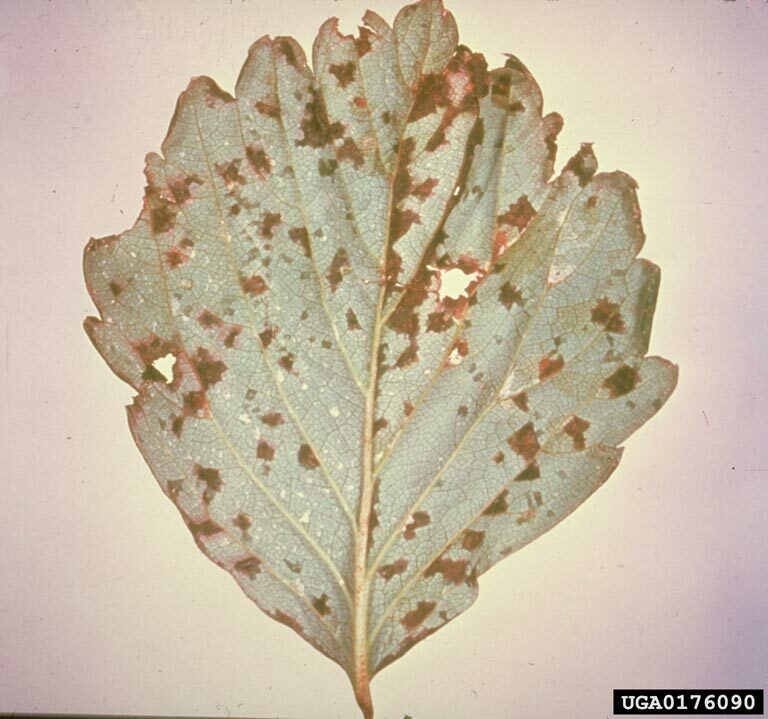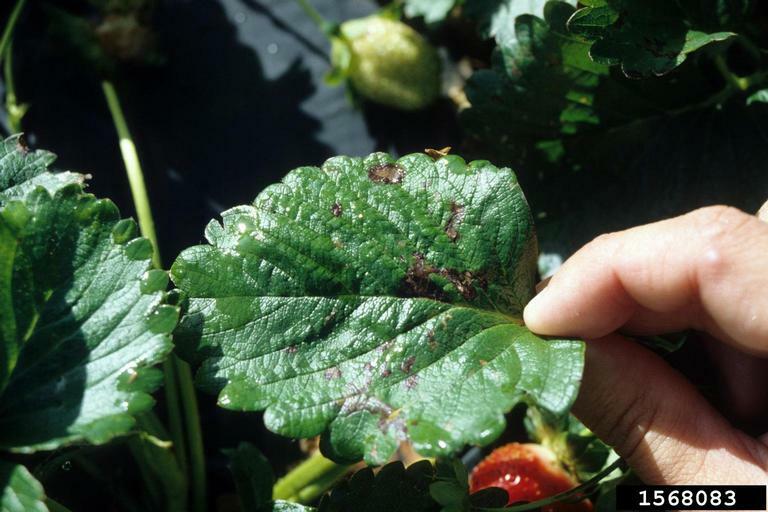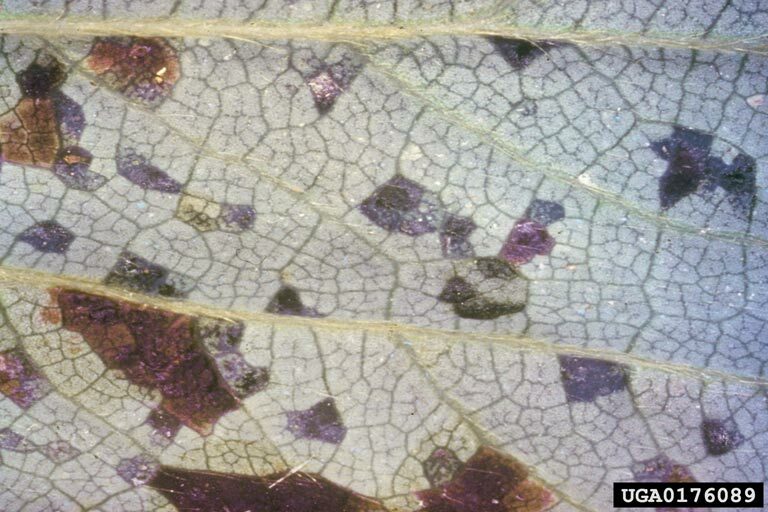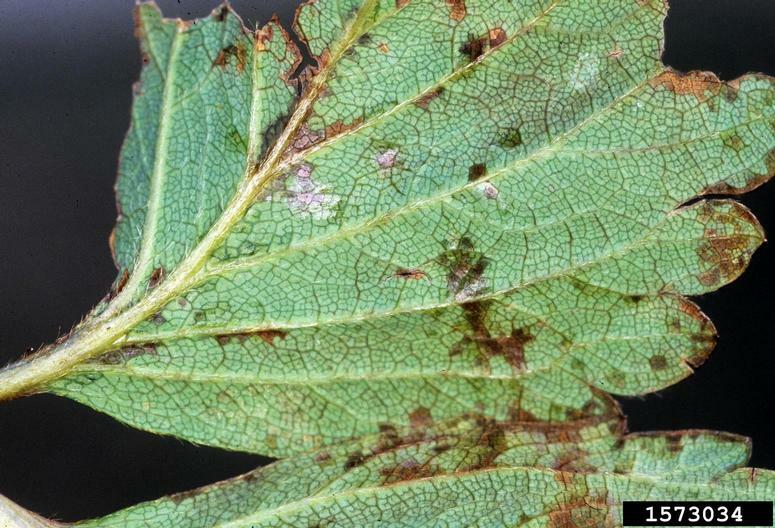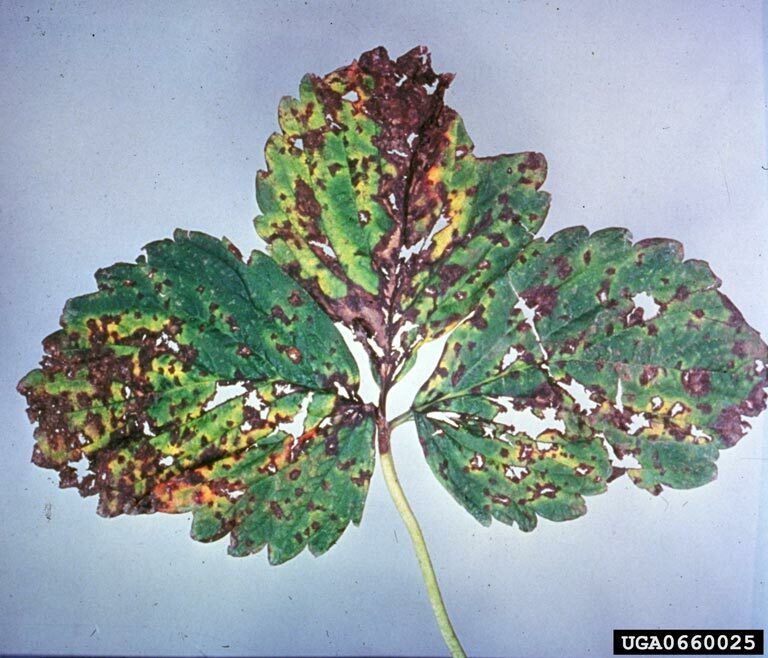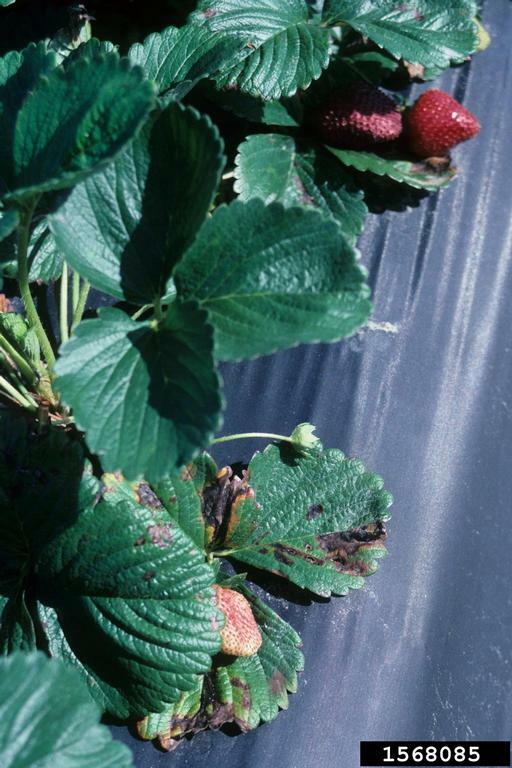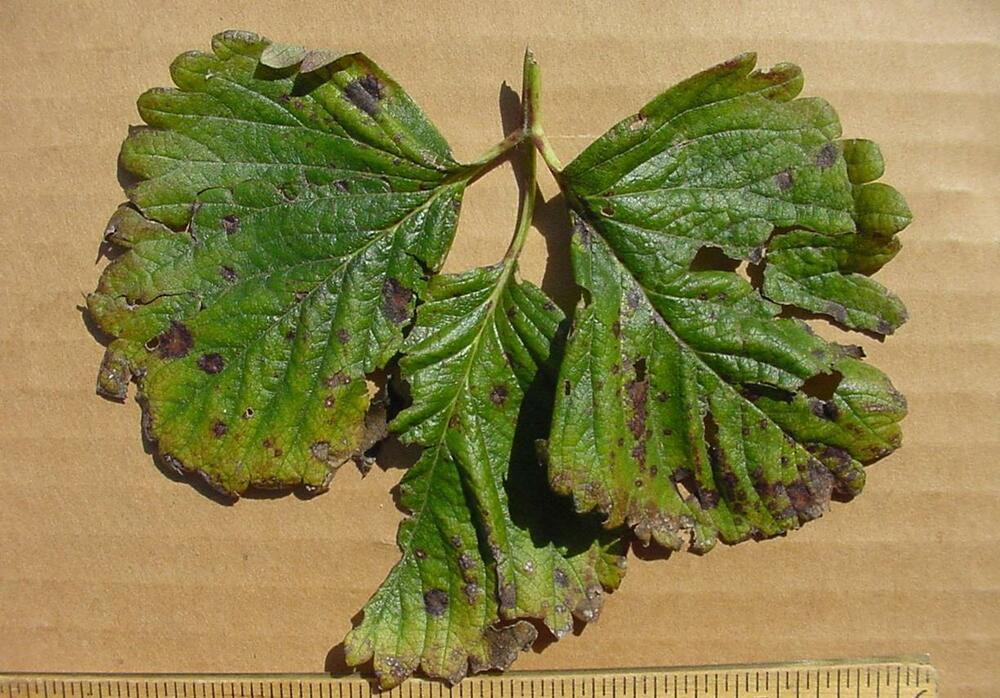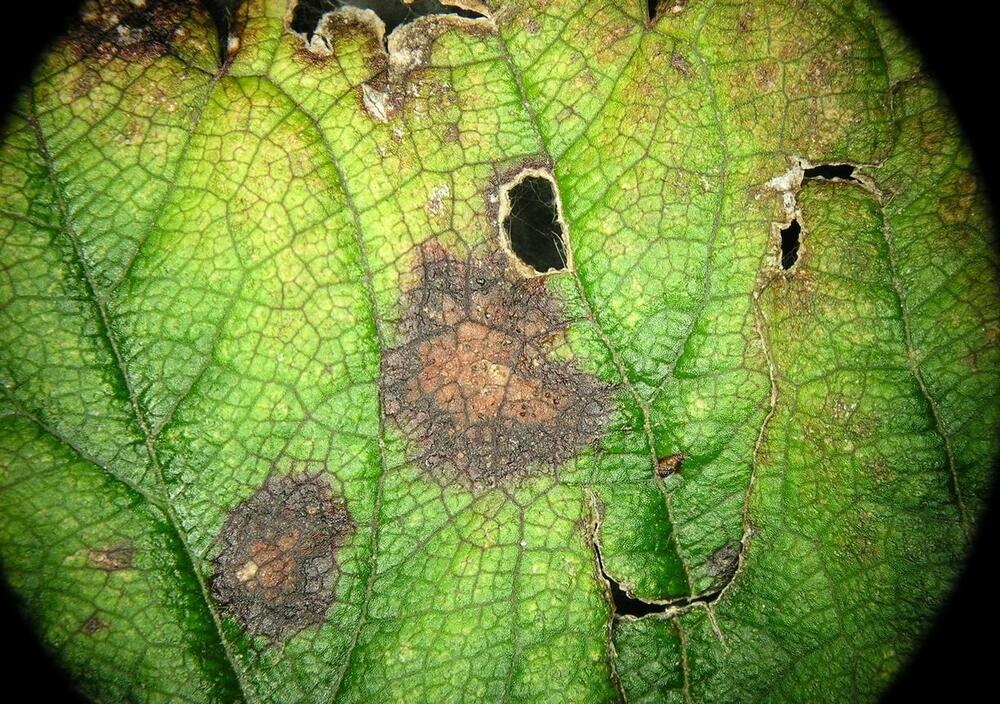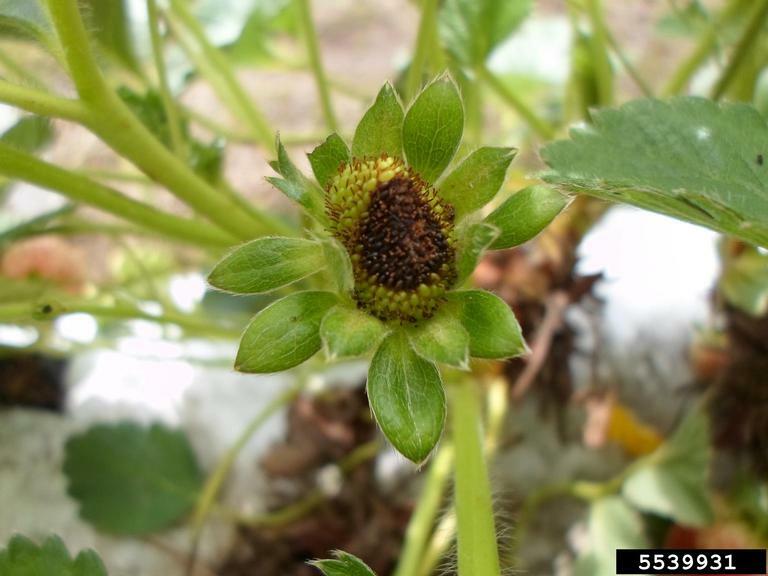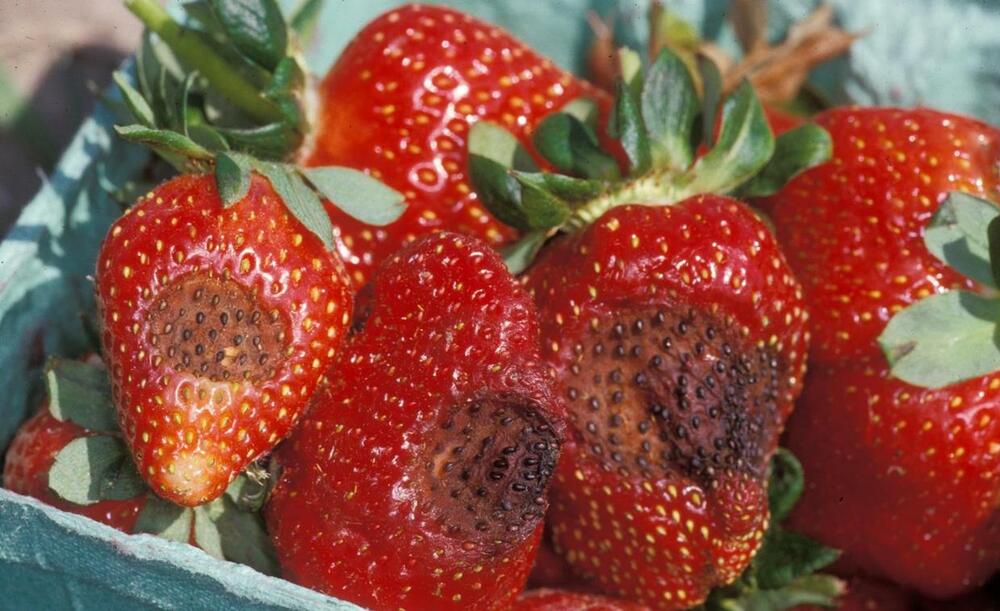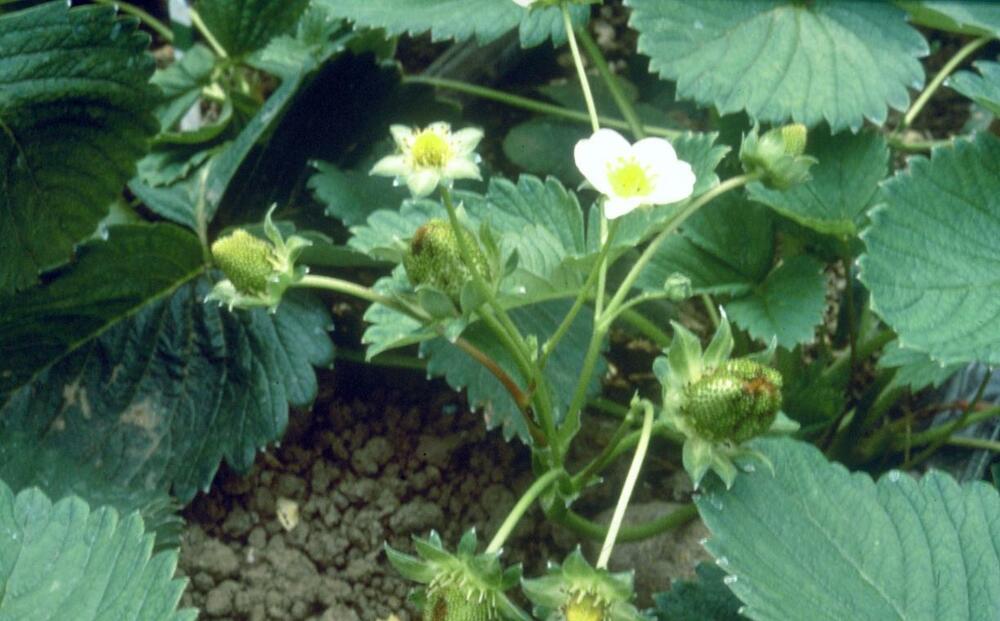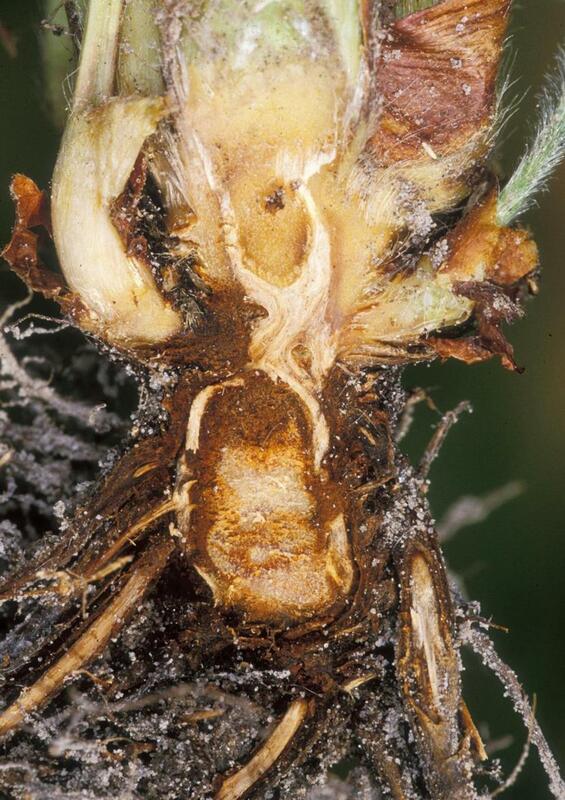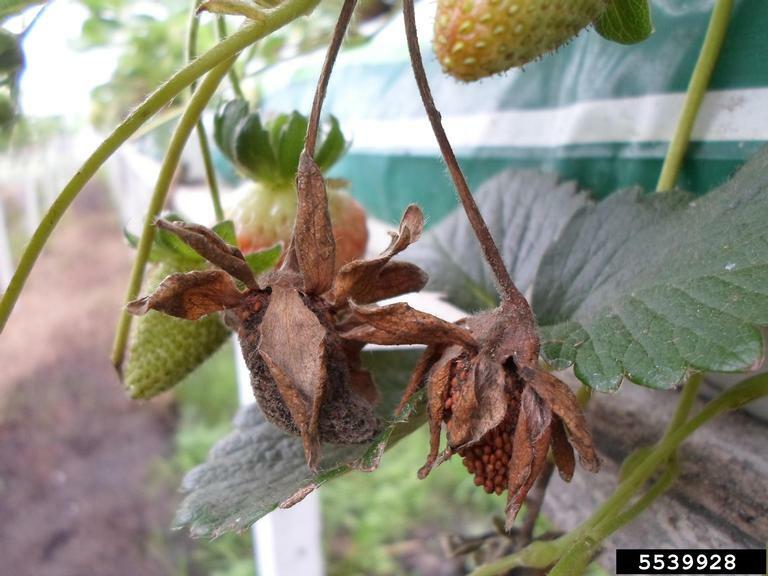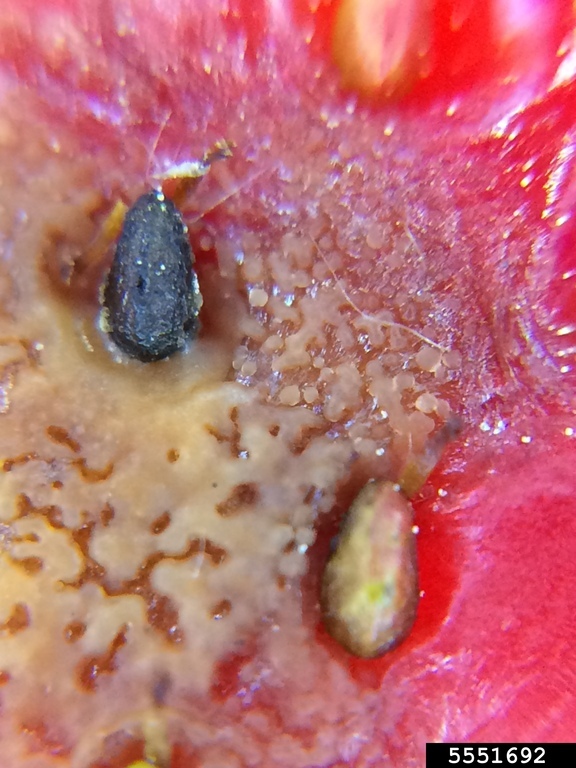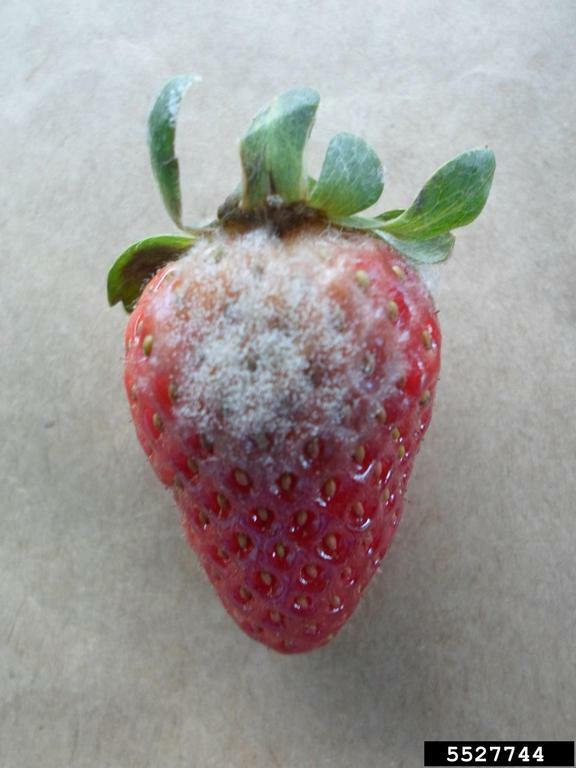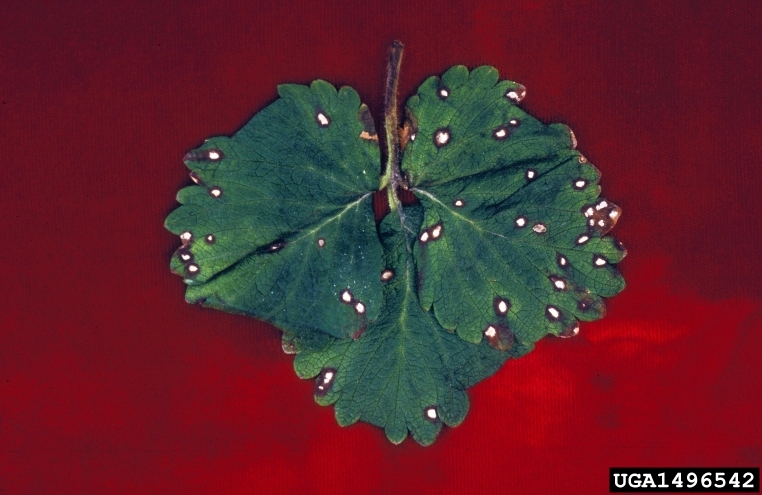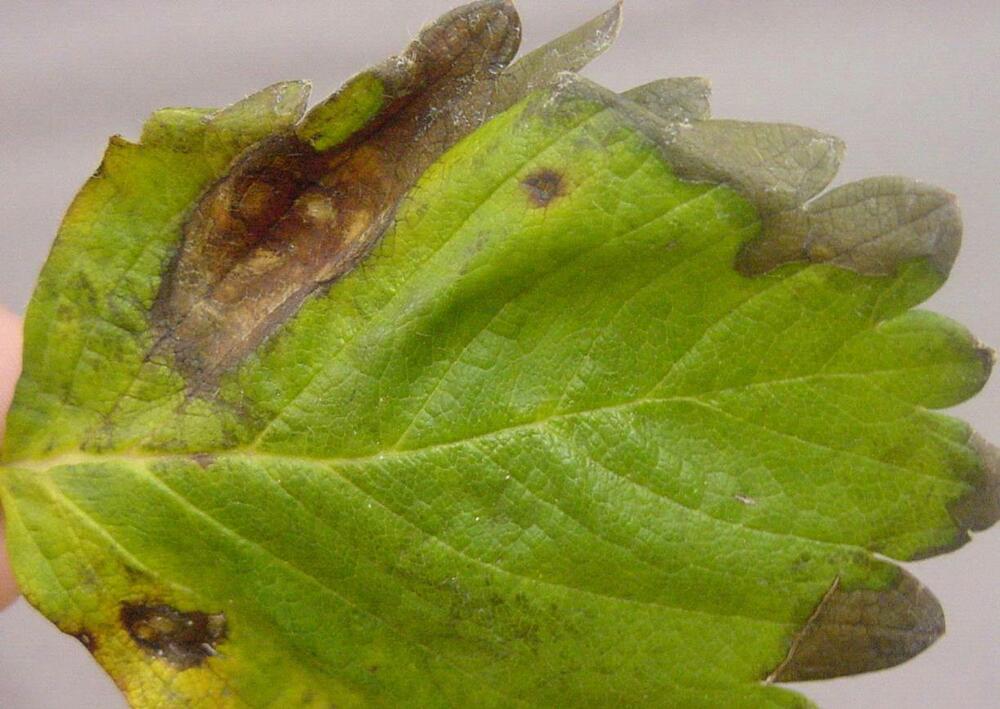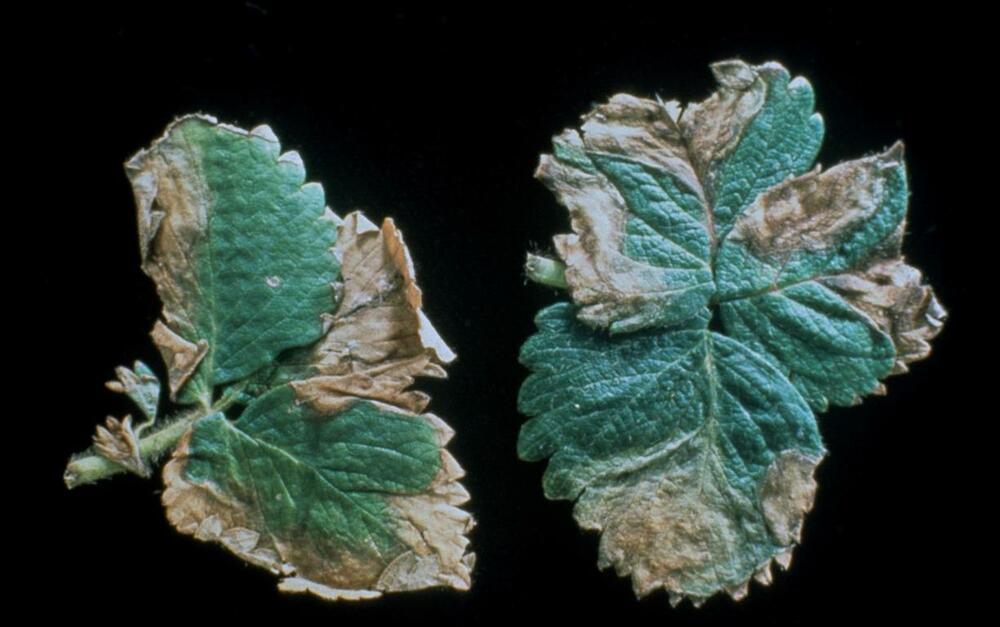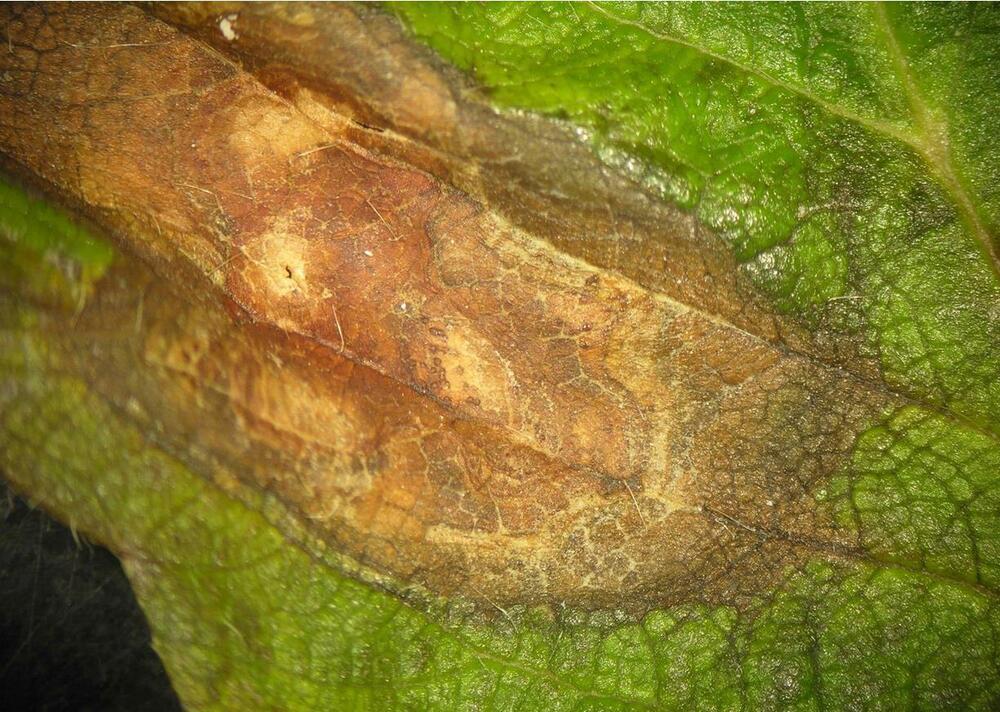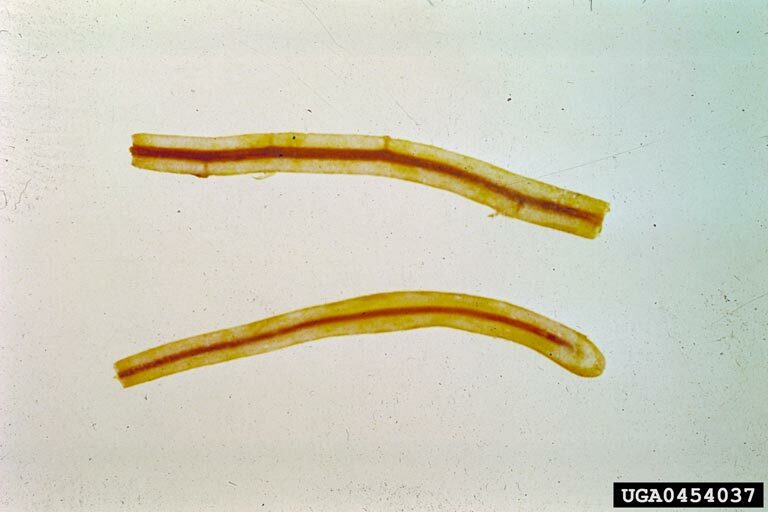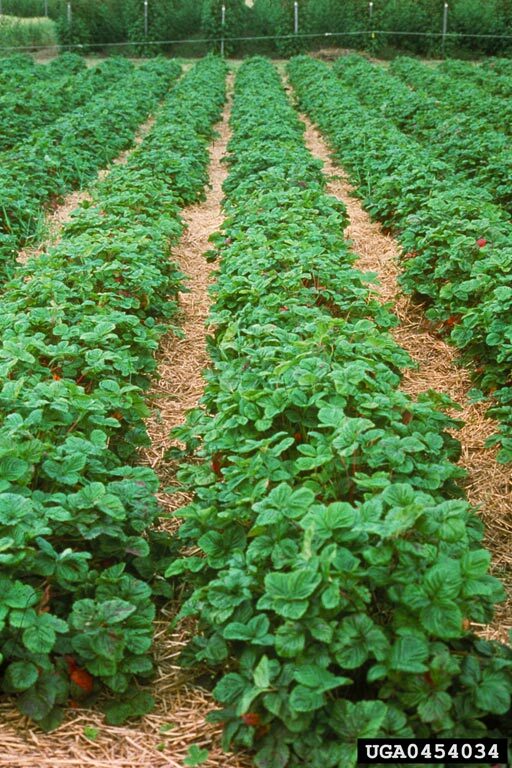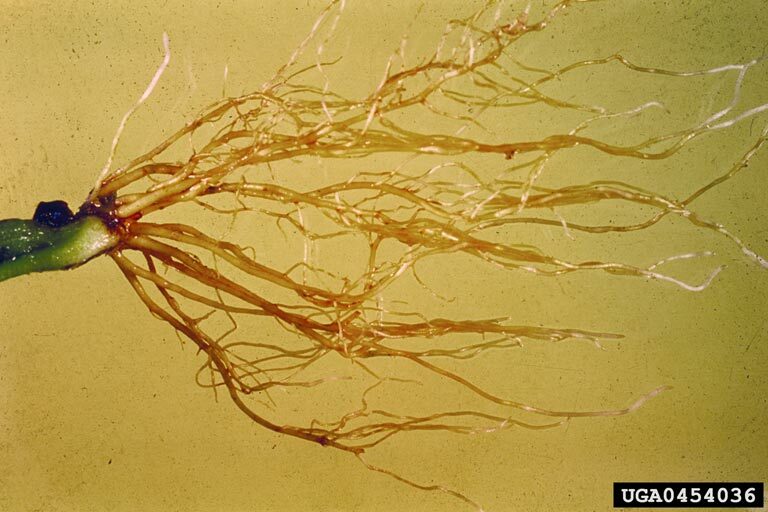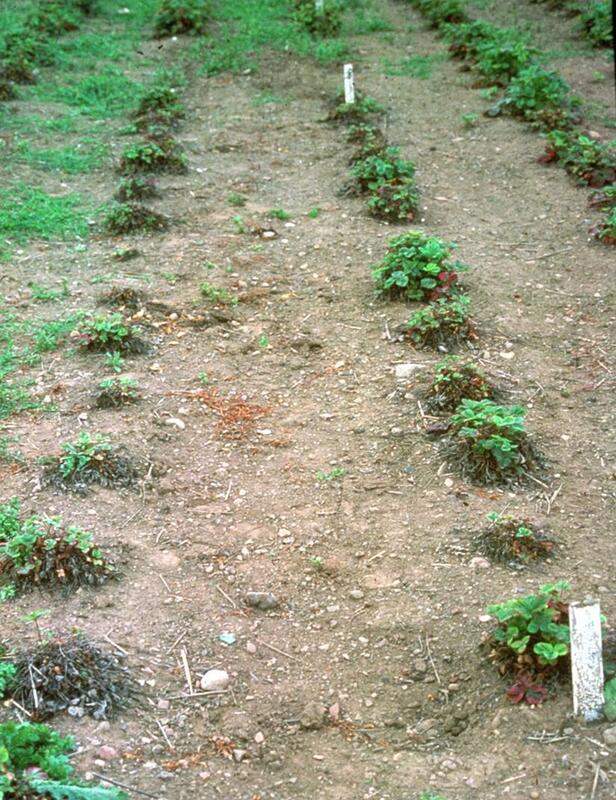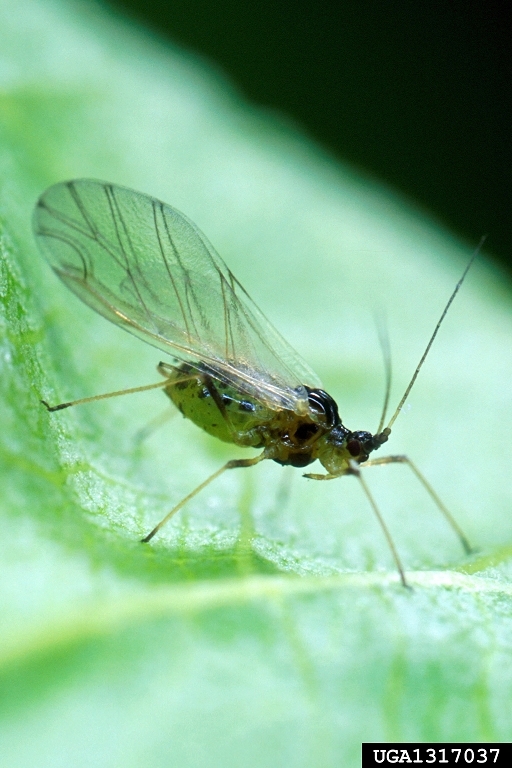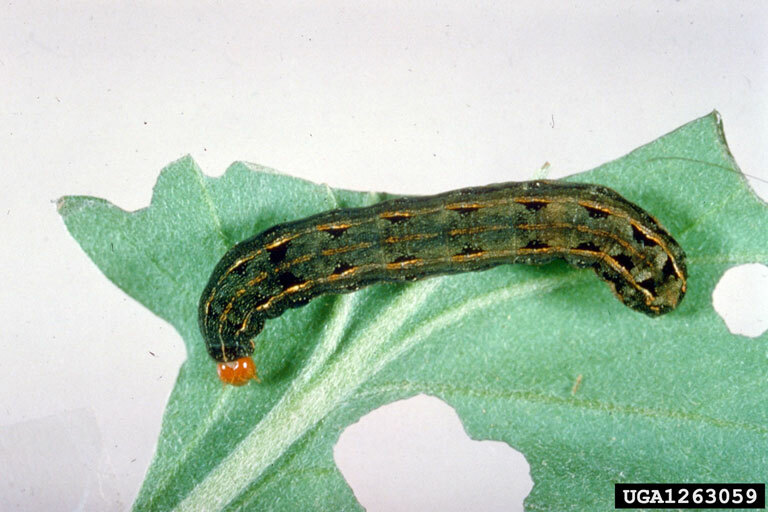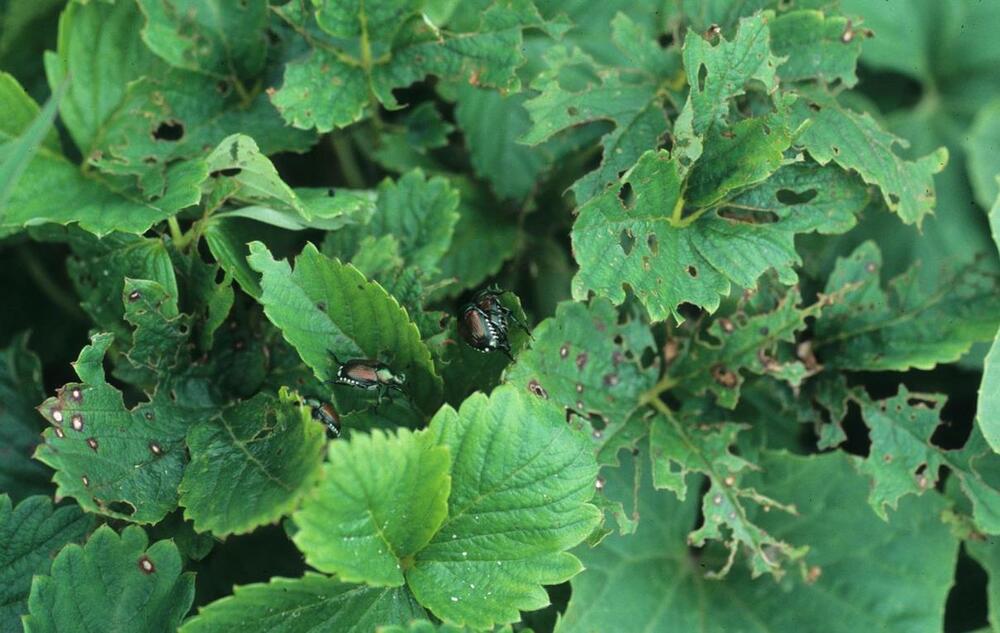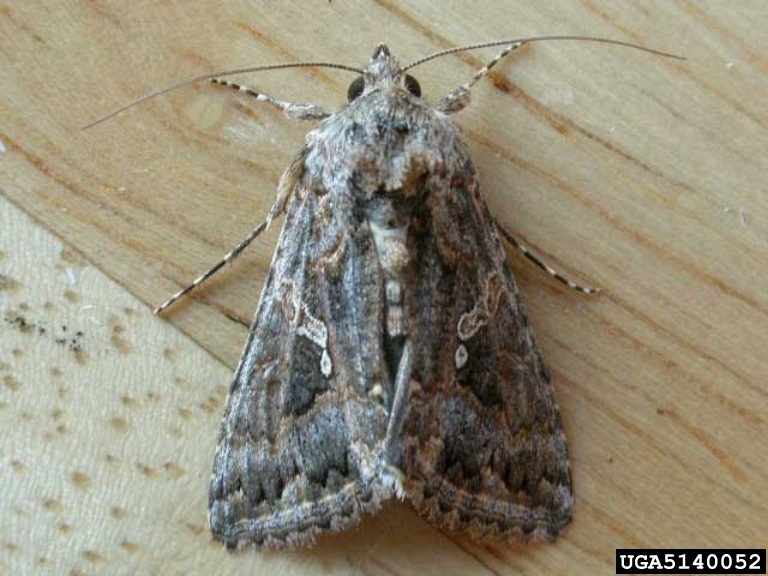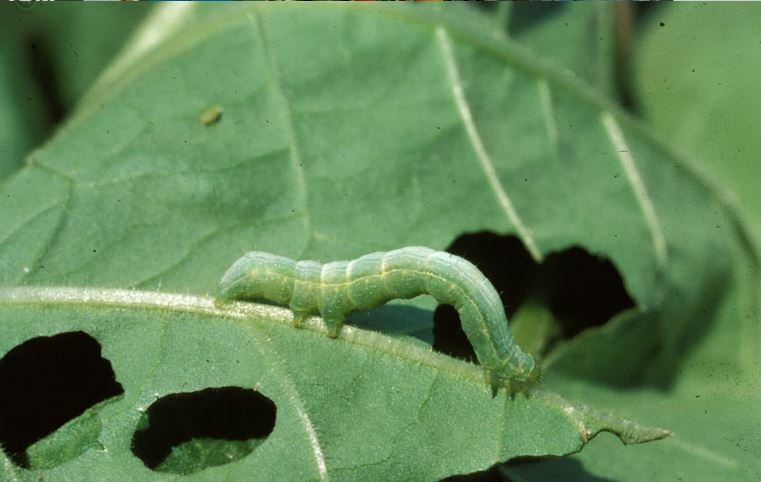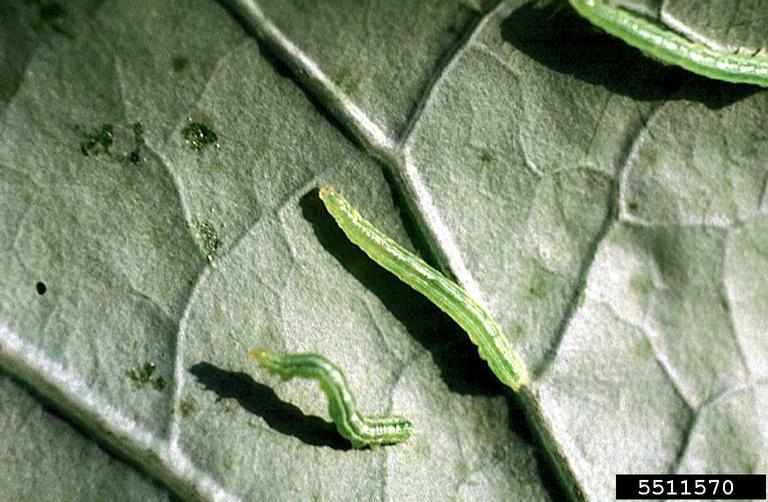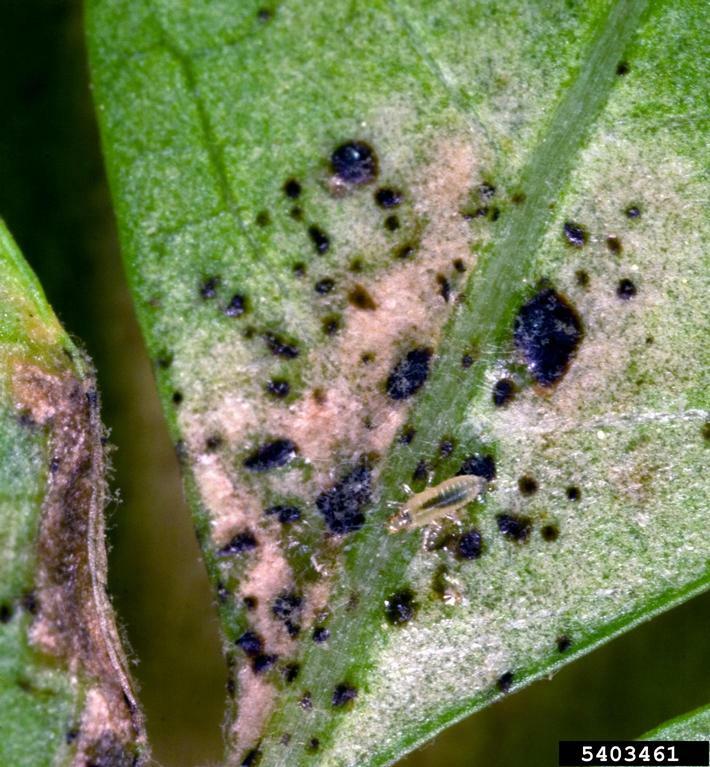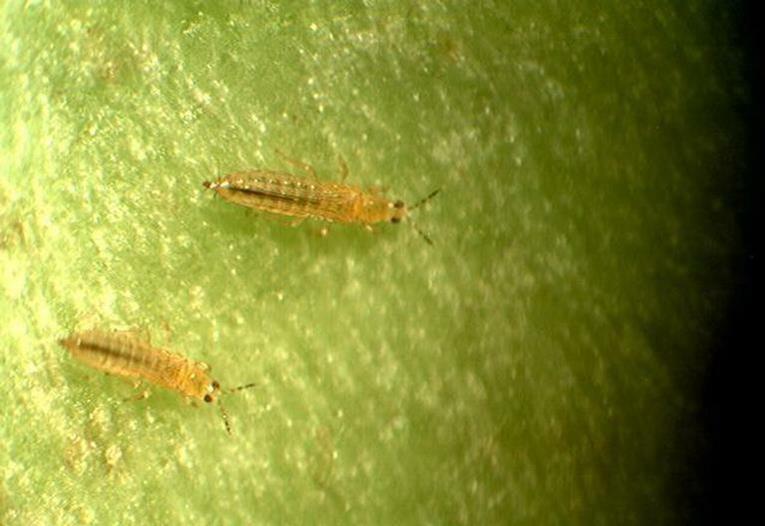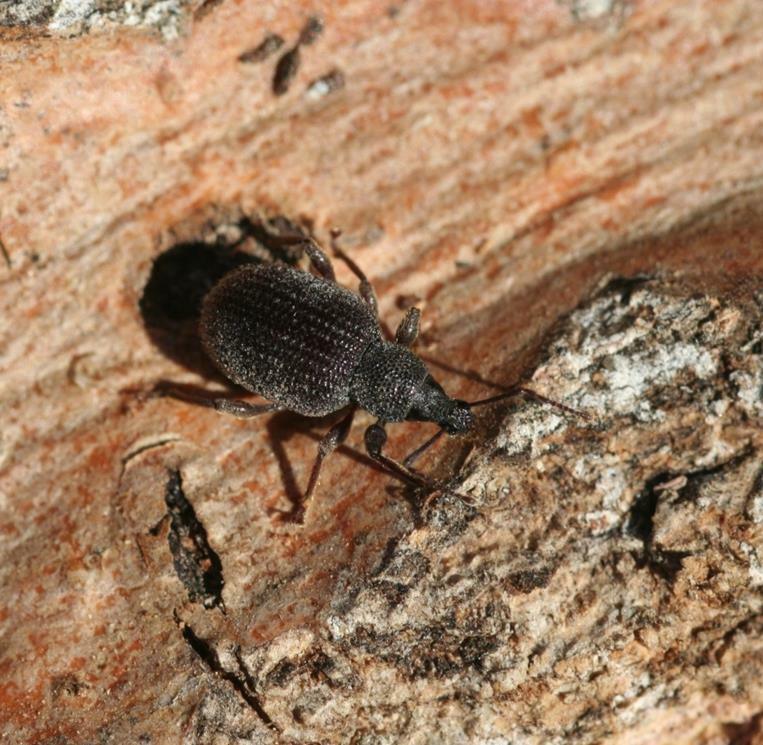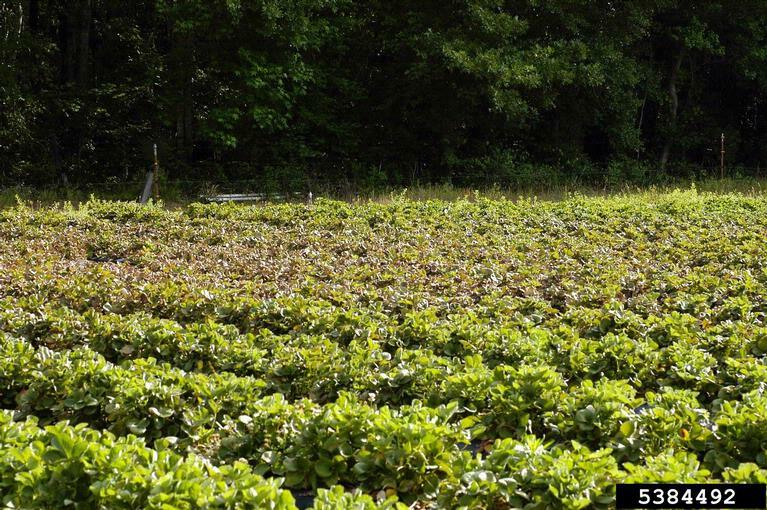Strawberry
Description
Uses
Propagation
References
Common Pests and Diseases
Diseases
Category : Bacterial
Angular leaf spot Xanthomonas fragariae
Symptoms
Very small water-soaked lesions on lower surfaces of leaves which enlarge to form dark green or translucent angular spots which ooze bacteria; lesions may coalesce to form reddish spots with a chlorotic halo.
Cause
Bacterium
Comments
Bacterium survives in crop debris and overwintering plants; can survive for long periods on plant debris but can not live free in soil; bacteria can be spread by splashing water.
Management
Use only certified planting stock; rotate crops and avoid overhead irrigation; chemical controls generally ineffective.Leaf scorch Diplocarpon earlianum
Symptoms
Irregular dark purple or brown blotches on upper leaf surface which may colaesce to produce large purplish brown patches; tissue between blotches may turn purple or red; lesions may also develop on flowers and fruits; affected petals may wither and drop from plant; lesions may girdle peduncles causing death of fruit.
Cause
Fungus
Comments
Disease emergence favored by wet foliage for extended periods of time.
Management
Plant resistant varieties; regular renewal of plants; plant in an area with good air circulation and drainage in full sun; remove all foliage from plants at harvest; application of appropriate foliar fungicide may be required to provide control.Category : Fungal
Anthracnose
Colletotrichum fragariae
Colletotrichum gloeosporoides
Colletotrichum acutatum
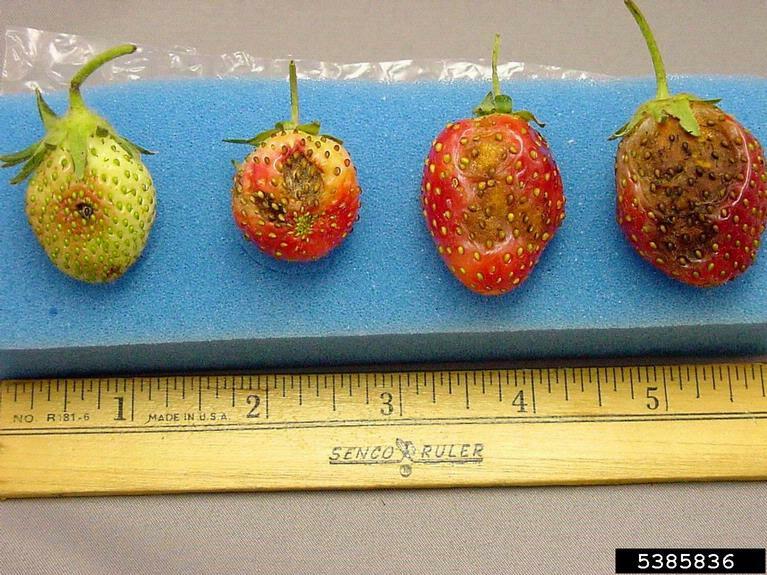
Fruit with symptoms of Anthracnose fruit rot. Note: Single, yellowed fruit on far left is not infected with Anthracnose fruit rot.
Symptoms
Leaf spot
Round black or light gray lesions on leaves; numerous spots may develop but leaves do not die.
Runners and petioles
Dark brown or black sunken, circular lesions on stems, petioles and runners; plants may be stunted and yellow; plants may wilt and collapse; internal tissues discolored red.
Crown rot
Youngest plant leaves wilt during water stress in early afternoon and recover in the evening; wilting progresses to entire plant; plant death; reddish-brown rot or streak visible when crown is cut lengthways.
Bud rot
Damp, firm dark brown to black rot on buds; plants with single buds may die; plants with multiple crown may wilt as disease progresses .
Flower blight
Dark lesion extending down pedicel which girdles the stem and kills the flower; flowers dry out and die; infection after pollination may result in small, hard, deformed fruit.
Fruit rot
Light brown water-soaked spots on ripening fruit which develop into firm dark brown or black round lesions.
Cause
Fungi
Comments
Plants that are planted in infected soil become infected by splashing water and soil; fungus survives in soil for up to 9 months.
Management
Fumigating soil may help reduce soil inoculum; solarizing soil may destroy soil inoculum; rotate to non-host crops if funigation or solarization is not possible; wash all soil from plant crowns prior to planting; weed around plants regularly; plant only disease free transplants; do not use excessive amounts of nitrogen fertilizer;Gray mold (Botrytis fruit rot, Blossom blight) Botrytis cinerea
Symptoms
Blossoms turning brown and dying; misshapen fruit; patches of rot on fruit which enlarge and often affects entire fruit; masses of gray mycelium on surface of rotting tissue; no leakage of fluid from fruit; fruit becomes dried and mummified.
Cause
Fungus
Comments
Disease emergence favored by extended periods of high humidity or leaf wetness during flowering and moderate temperatures.
Management
Remove and destroy all dead or infected material; remove decaying fruit; grow fruit under plastic; use plastic mulch to reduce fruit contact with soil; apply appropriate fungicides; plant in areas where wind will rapidly dry wet plants and fruit; plow crop debris into soil after harvest.Leaf spot (Mycosphaerella leaf spot) Mycosphaerella fragariae
Symptoms
Small round or irregular deep purple lesions on upper surfaces of leaves which enlarge and develop a gray-white center; lesions can grow large in susceptible varieties and the center of the lesion remains brown; lesions may also develop on fruit, petioles and stolons.
Cause
Fungus
Comments
Disease spread by splashing water.
Management
Plant disease free stock; apply protective foliar fungicide.Phomopsis leaf blight Phomopsis obscurans
Symptoms
One to five circular, red-purple spots on leaflet; distinct zonal patterns on leaves with dark brown center surrounded by lighter brown and then purple, red or yellow; dark elongated and sunken lesions on petioles, stolons and fruit trusses.
Cause
Fungus
Comments
Disease occurs worldwide and can cause severe defoliation.
Management
Specific control measures not developed; remove older leaves after harvest; application of foliar fungicides after harvest may help control disease.Powdery mildew Spaerotheca macularis
Symptoms
Patches of fuzzy white fungal growth on lower leaf surface which enlarge and coalesce; leaf edges curling upwards; purple-red blotches on lower leaf surface; deformed fruit may be produced if flowers become infected, severe infections may cause the plant to produce no fruit
Cause
Fungus
Comments
Fungus overwinters on leaves; spores spread by wind
Management
Apply protective fungicide e.g. sulfur at first signs of disease; plant resistant varieties; avoid overhead irrigation; remove dead leaves at harvest to decrease overwintering myceliumCategory : Oomycete
Red stele (Red core) Phytophthora fragariae
Symptoms
Stunted plant growth; old leaves withered and may have red yellow or orange tinge; new leaves small; little or no fruit produced and few runners; reddish discoloration of root core which may extend into the crown.
Cause
Oomycete
Comments
Can survive in cuttings and spread to new plants; disease emergence favored by wet or moist soils and cool, wet weather conditions; younger plants generally show more damage to roots.
Management
Plant only certified stock; avoid transferring soil and water contaminates sites; avoid planting in areas with a history of red stele; plant in raised beds to improve drainage; if disease is present apply appropriate fungicide.Category : Other
Slugs
Arion hortensis
Deroceras reticulatum
etc.
Symptoms
Irregularly shaped holes in leaves and stems;rough holes in ripe fruit; if infestation is severe, leaves may be shredded; slime trails present on rocks, walkways, soil and plant foliage; several slug and snail species are common garden pests; slugs are dark gray to black in color and can range in size from 2.5 to 10 cm (1-4 in).
Cause
Mollusc
Comments
Slugs prefer moist, shaded habitats and will shelter in weeds or organic trash; adults may deposit eggs in the soil throughout the season; damage to plants can be extensive.
Management
Practice good garden sanitation by removing garden trash, weeds and plant debris to promote good air circulation and reduce moist habitat for slugs; handpick slugs at night to decrease population; spread wood ashes or eggshells around plants; attract molluscs by leaving out organic matter such as lettuce or grapefruit skins, destroy any found feeding on lure; sink shallow dishes filled with beer into the soil to attract and drown the molluscs; chemical controls include ferrous phosphate for organic gardens and metaldehyde (e.g. Buggeta) and carbaryl (e.g Sevin bait) for non-organic growers.Pests
Category : Insects
Aphids (Peach aphid, Potato aphid, Melon aphid, Strawberry aphid)
Myzus persicae
Macrosiphon euphorbiae
Aphis gossypii
Chaetosiphon fragaefolii
Symptoms
Small soft bodied insects on underside of leaves and/or stems of plant; usually green or yellow in color, but may be pink, brown, red or black depending on species and host plant; if aphid infestation is heavy it may cause leaves to yellow and/or distorted, necrotic spots on leaves and/or stunted shoots; aphids secrete a sticky, sugary substance called honeydew which encourages the growth of sooty mold on the plants.
Cause
Insects
Comments
Aphids transmit several viruses which can be very damaging to strawberry, the insects rarely reach a high enough population to cause severe damage directly but the spread of viruses is a major concern in strawberry production.
Management
If aphid population is limited to just a few leaves or shoots then the infestation can be pruned out to provide control; check transplants for aphids before planting; use tolerant varieties if available; reflective mulches such as silver colored plastic can deter aphids from feeding on plants; sturdy plants can be sprayed with a strong jet of water to knock aphids from leaves; insecticides are generally only required to treat aphids if the infestation is very high - plants generally tolerate low and medium level infestation; insecticidal soaps or oils such as neem or canola oil are usually the best method of control; always check the labels of the products for specific usage guidelines prior to use.
Armyworm (Beet army worm, southern armyworm)
Spodoptera exigua
Spodoptera eridania
Symptoms
Singular, or closely grouped circular to irregularly shaped holes in foliage; heavy feeding by young larvae leads to skeletonized leaves; shallow, dry wounds on fruit; egg clusters of 50-150 eggs may be present on the leaves; egg clusters are covered in a whitish scale which gives the cluster a cottony or fuzzy appearance; young larvae are pale green to yellow in color while older larvae are generally darker green with a dark and light line running along the side of their body and a pink or yellow underside.
Cause
Insect
Comments
Insect can go through 3–5 generations a year.
Management
Organic methods of controlling armyworms include biological control by natural enemies which parasitize the larvae and the application of Bacillus thuringiensis; there are chemicals available for commercial control but many that are available for the home garden do not provide adequate control of the larvae.Japanese beetle Popillia japonica
Symptoms
Leaves skeletonized (only veins remaining); flowers and buds damaged; plant damage may be extensive; adult insect is a metallic green-bronze beetle with tufts of white hair protruding from under wing covers on each side of the body; adult beetles are approximately 13 mm in length; larvae are cream-white grubs which develop in the soil.
Cause
Insect
Comments
One beetle generation every 1-2 years; pheromone traps may actually attract more beetles to home gardens and should generally be avoided; beetle overwinters as larvae in soil; beetle has an extensive range of over 300 host plants.
Management
If beetles were a problem in the previous year, use floating row covers to protect plants or spray kaolin clay; adult beetles can be hand picked from plants and destroyed by placing in soapy water; parasitic nematodes can be applied to soil to reduce the number of overwintering grubs; insecticidal soaps or neem oil can help reduce beetle populations.Loopers (Cabbage looper) Trichoplusia ni
Symptoms
Large or small holes in leaves; damage often extensive; caterpillars are pale green with a white lines running down either side of their body; caterpillars are easily distinguished by the way they arch their body when moving; eggs are laid singly, usually on the lower leaf surface close to the leaf margin, and are white or pale green in color.
Cause
Insect
Comments
Insects overwinter as pupae in crop debris in soil; adult insect id a dark colored moth; caterpillars have a wide host range.
Management
Loopers populations are usually held in check by natural enemies; if they do become problematic larvae can be hand-picked from the plants; an organically acceptable control method is the application of Bacillus thuringiensis which effectively kills younger larvae; chemical sprays may damage populations of natural enemies and should and should be selected carefully.Thrips (Western flower thrips) Frankliniella occidentalis
Symptoms
Damage to strawberry flowers, including browning of anthers and stigmas; insects may be numerous on fruit and may cause bronzing around the cap; insect is small (1.5 mm) and slender and best viewed using a hand lens; adult thrips are pale yellow to light brown and the nymphs are smaller and lighter in color.
Cause
Insect
Comments
Thrips population builds up in spring on weeds and a number of crops and migrate to strawberries when crops are harvested or when weeds dry up.
Management
Avoid planting next to onions, garlic or cereals where very large numbers of thrips can build up; use reflective mulches early in growing season to deter thrips; apply appropriate insecticide if thrips become problematic.Weevils (Strawberry root weevil, Rough strawberry root weevil, Black vine weevil) Otiorhynchus spp.
Symptoms
Notches in leaves of plants; plants stunted and dark in color with closely bunched leaves; adult insect is a snot-nosed beetle which can vary in color from dark to light brown depending on species; larvae are cream-white colored grubs which feed on roots below ground.
Cause
Insect
Comments
Damage within a field usually affects a circle of plants; weevil attack is sporadic and can be very damaging.
Management
Keep strawberry beds free of weeds and grass; avoid planting close to woodland or blackberry or elderberry which may harbor weevil populations; pesticide sprays or dusts which contain pyrethroids are effective at controlling strawberry weevils.Category : Mites
Spider mites (Strawberry spider mite) Tetranychus turkestani
Symptoms
Leaves stippled with yellow; leaves may appear bronzed; webbing covering leaves; mites may be visible as tiny moving dots on the webs or underside of leaves, best viewed using a hand lens; usually not spotted until there are visible symptoms on the plant; leaves turn yellow and may drop from plant.
Cause
Arachnid
Comments
Spider mites thrive in dusty conditions; water-stressed plants are more susceptible to attack.










